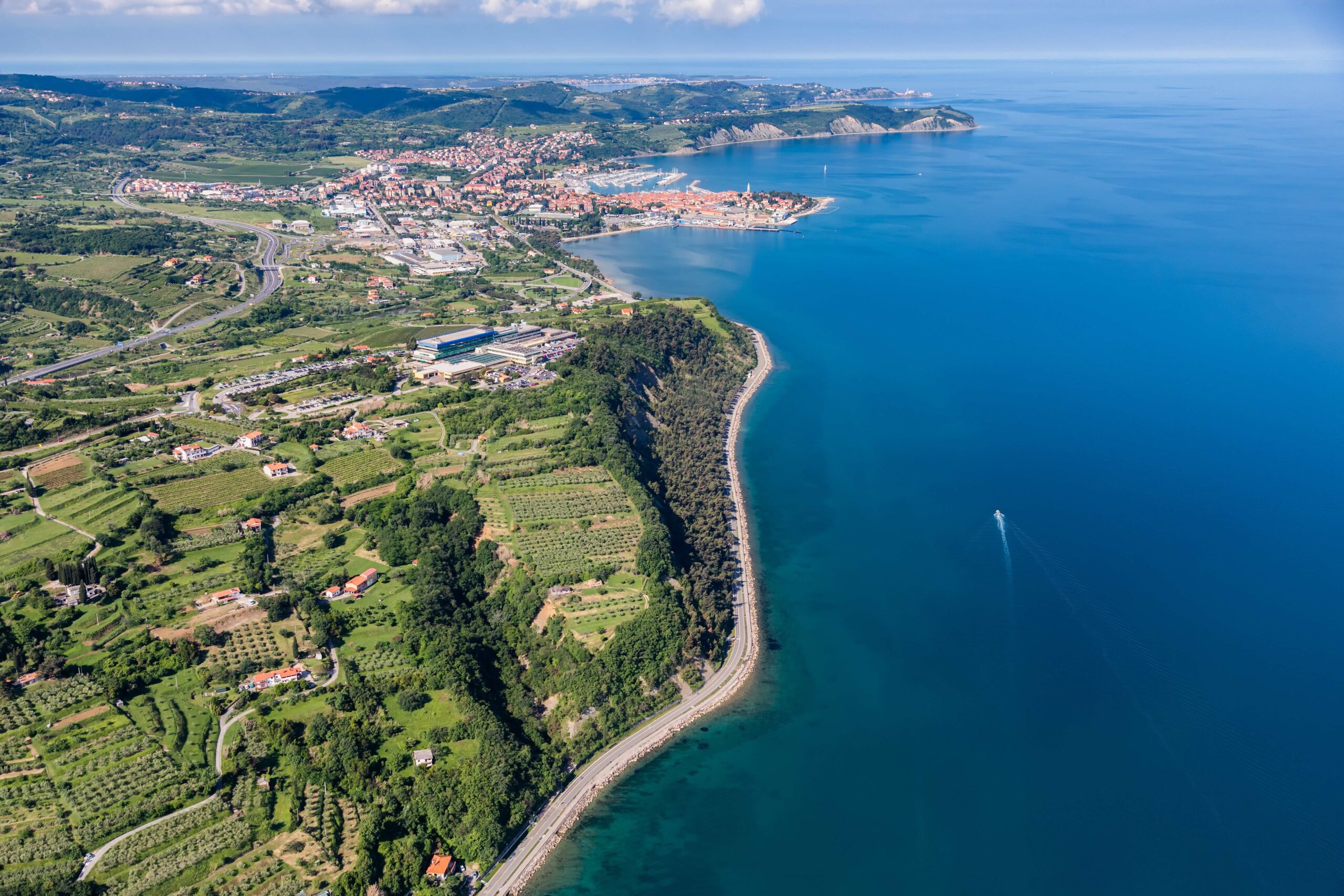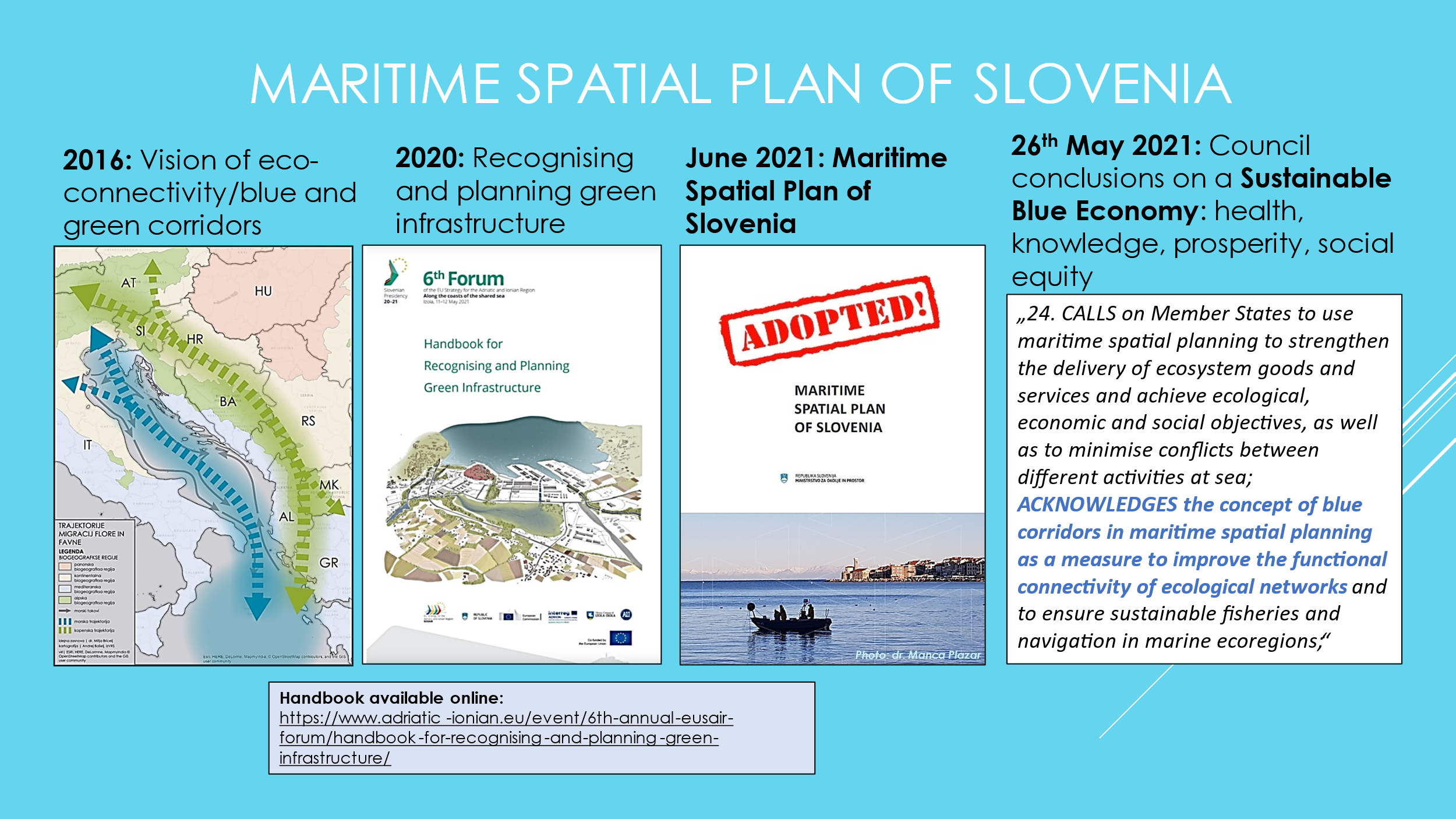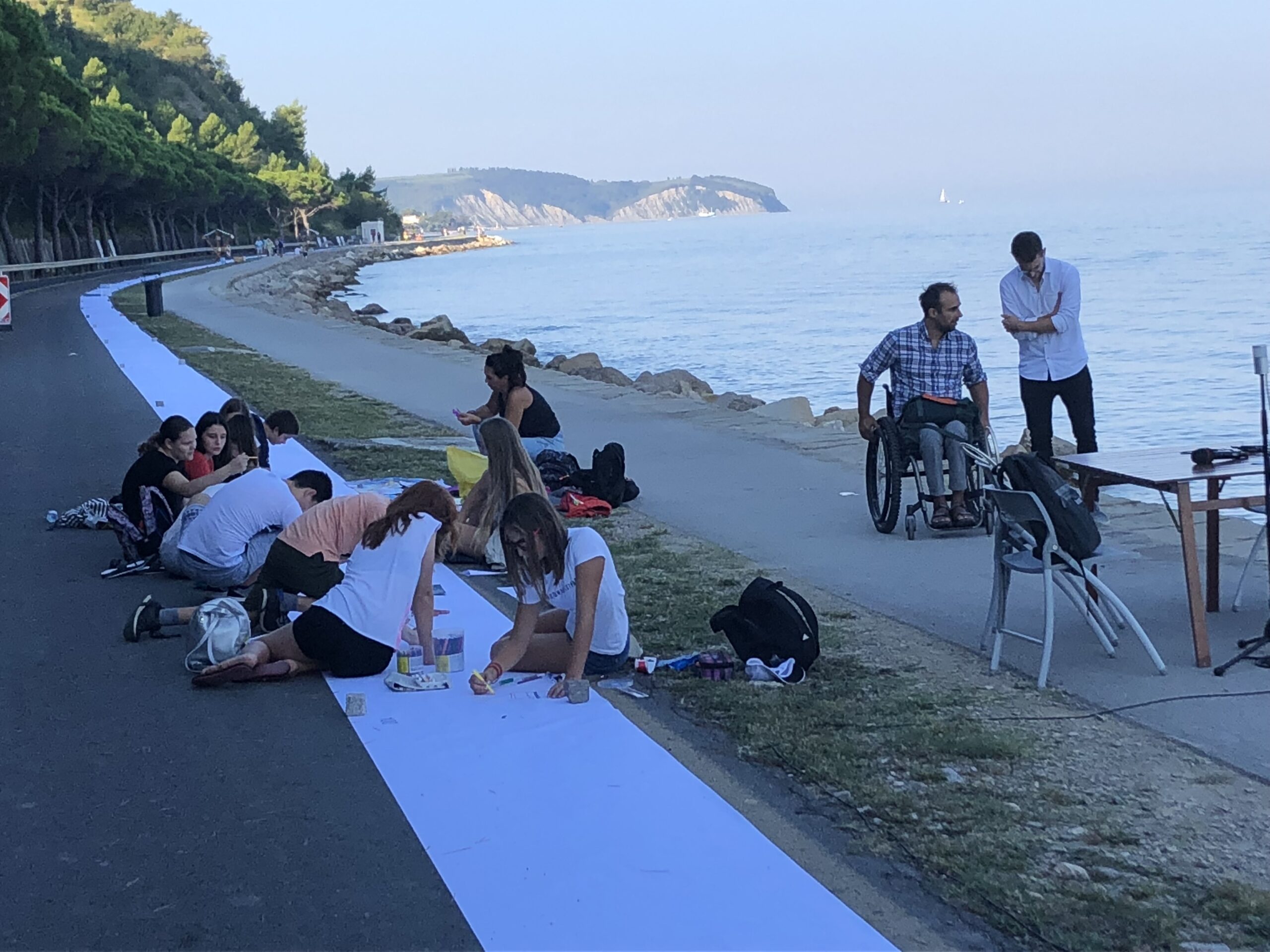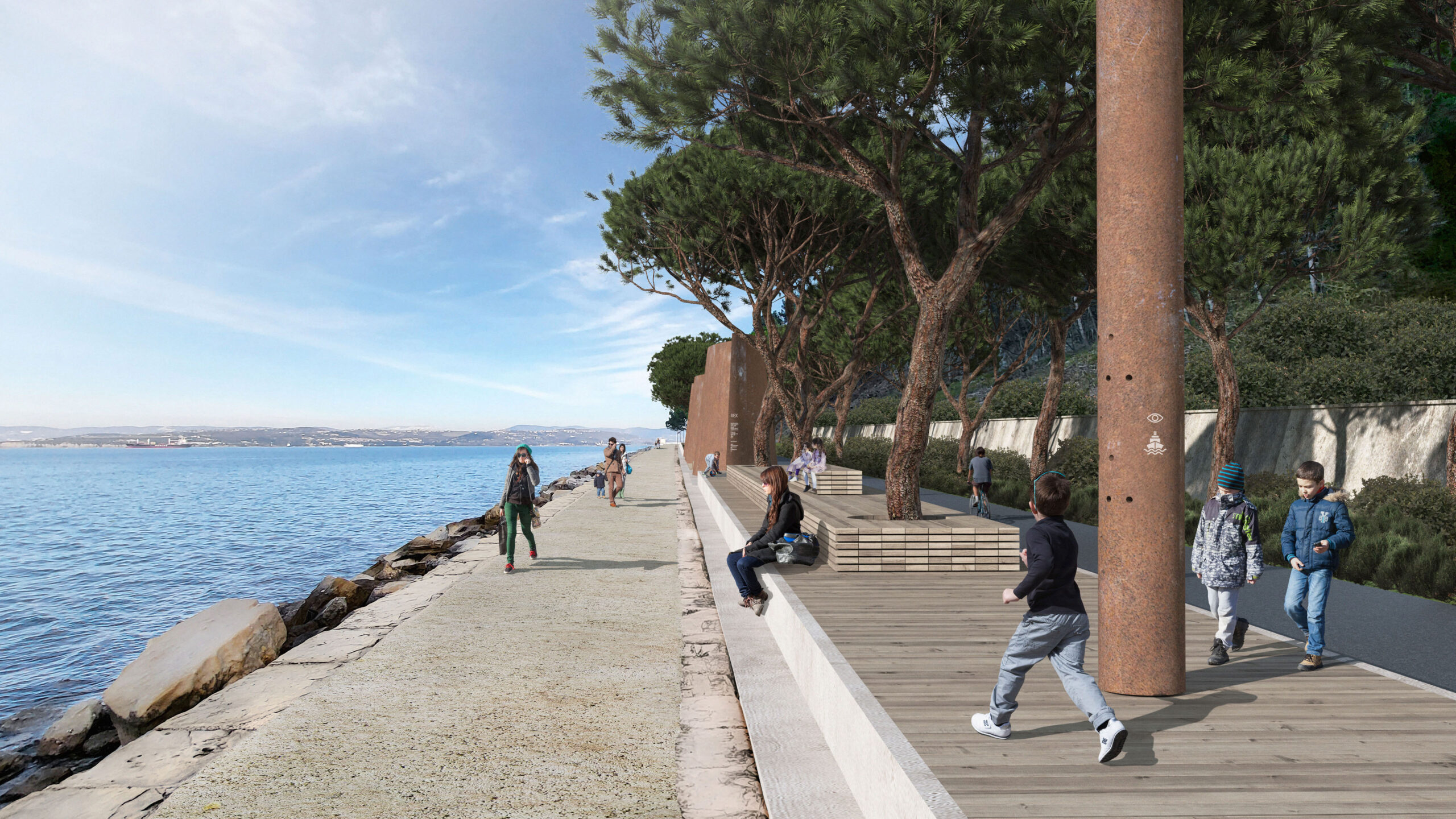
Slovenia: When 1/1000 of the Mediterranean coast becomes a model for the region’s future

A former state road along the coastal cities of Koper and Izola, now repurposed for recreational use
Copyright: Archive JZP Izola
The Mediterranean today is faced with sea-level rise, ecological degradation, and unsustainable development, but one small country has redefined what coastal leadership looks like. With just over 46 kilometres of shoreline – a mere 1/1000 of the Mediterranean coast – Slovenia dared to ask: could a small state catalyze change for the entire region?
The answer, it turns out, was yes – and it’s because of how Slovenia embraced and led the implementation of the Protocol on Integrated Coastal Zone Management (ICZM) under the Barcelona Convention. What began with visionary planning became a structural shift for nature and society, setting the pace for regional action and influencing European coastal policy.
Where it all began
It all began in Portorož in 2005, when Slovenia hosted the 14th Meeting of the Contracting Parties to the Barcelona Convention. There, the first-ever Mediterranean Strategy for Sustainable Development was adopted, paving the way for the ICZM Protocol – hailed by UNEP/MAP as “the Protocol of a New Generation”. This groundbreaking legal instrument brought together climate adaptation, biodiversity protection and land-sea planning under a single regional framework – the first of its kind.
And no country championed the Protocol more than Slovenia. In 2008, it led the way to the Protocol’s signature in Madrid and became its first ratifier the following year; a milestone now marked annually on 25 September as Mediterranean Coast Day.
But what followed was more than celebration – a successful implementation.

Vision 1/1000 of the Mediterranean: from imagination to action
Through a new Coastal Area Management Programme (CAMP Slovenia), the country set out to apply the Protocol’s principles in real life. Municipalities, ministries, scientists, and civil society worked side-by-side to sketch a new future, literally.
On the first day of the CAMP, a hand-drawn “Vision 1/1000 of the Mediterranean” emerged, depicting a coastline where restored wetlands meet clean ports, where marine farms and wild ecosystems coexist, and where communities are empowered as guardians of their coast.
Poster illustrating the development vision for the Slovenian coast, created as part of the CAMP project
Copyright: Archive JZP Izola
This bold vision sparked a series of real-world achievements:
- River basin management and marine spatial planning were harmonized from source to sea, pioneering the “Let the water lead” approach.
- New protected areas were designated – from the Strunjan and Sečovlje Salina reserves to the Škocjan Caves, the first underground Ramsar wetland in the world.
- Pollution control advanced with the construction of a modern wastewater plant in Miren/Nova Gorica – the only one in the Adriatic-Ionian region using membrane technology to remove microplastics.
- In Koper and Izola, a coastal road was rerouted inland, turning the old highway into a peaceful coastal park now used by pedestrians, cyclists, and wildlife – a model now cited for managed retreat and nature-based solutions.
Institutions that inspire
Behind these successes are institutions with a long-term vision. The Izola Public Institute for Entrepreneurship and the EUSAIR (EU Strategy for the Adriatic and Ionian Region) Facility Point have helped translate Slovenia’s early ambition into cross-border collaboration. By aligning ICZM, marine spatial planning (MSP), and river basin management, they helped build a living system of blue and green corridors, also by providing more space for water.
For more than a decade, Izola has hosted Mediterranean Coast Week, connecting science, policy, economy, and community voices around shared challenges and opportunities.
Slovenia’s steady, principle-driven approach has had ripple effects far beyond its borders:
- Its Maritime Spatial Plan reflects the ecosystem approach and is aligned with key EU directives (Habitats, Water, Marine Strategy, and MSP).
- The European Commission recognized Slovenia’s “Blue Corridors” concept as part of the EU Sustainable Blue Economy Strategy.
- Slovenia backed the Adriatic’s designation as a Particularly Sensitive Sea Area (PSSA) and supported contingency and ballast water plans to protect regional waters.

A proactive ICZM approach – from EUSAIR Blue-Green Corridors to Marine Spatial Planning (MSP)
Copyright: Archive JZP Izola
“At COP 23 of the Barcelona Convention, the region formally acknowledged what Slovenia had demonstrated: ICZM and MSP are not just tools. They are essential for a green and blue transition”.
People power and the role of youth
This momentum wouldn’t have been possible without trust and collaboration – across ministries, sectors, borders, and generations. Slovenia understood early that the Mediterranean’s greatest strength lies in its diversity – of ecosystems, economies, and cultures, and that sustainable planning must reflect that richness.
Mitja Bricelj – a key figure in Slovenia’s coastal transformation – is clear: “The future of our coasts won’t be written in conference rooms alone. It depends on young people stepping forward – not just as participants, but as planners, innovators, and decision-makers. They must see themselves as co-owners of the Mediterranean’s future.”
This is why youth and civil society have been actively involved throughout the process, from contributing ideas to driving local implementation. It’s also why Slovenia’s experience is so relevant now: it shows what happens when coastal management is not only about infrastructure, but about people.

Public spatial planning initiative engaging citizens through the campaign “Let’s Draw the Coast”
Copyright: Archive JZP Izola
A call to go faster and further
Despite its proven benefits, the ICZM Protocol has only been ratified by 11 Mediterranean countries + the EU. That’s not enough.
To create lasting change, cooperation across all levels of society is vital. This means:
- National governments must fully embed ICZM principles into coastal development strategies.
- EU institutions must invest in blue-green corridors and ICZM–MSP integration as pillars of the Green Deal.
- Local authorities must foster bottom-up participation, especially by involving youth and civil society as co-creators of change.
- CAMP-type processes must be replicated and resourced in other vulnerable coastal zones.
Along Slovenia’s 46 kilometres of coast, we are already seeing what’s possible. Now is the time to nurture that same ambition across the Mediterranean – and turn a small but bold idea into a region-wide legacy.

Winning design of the 2023 public architectural competition for the comprehensive redevelopment of the coastal promenade between Izola and Koper
Copyright: Chamber of Architecture and Spatial Planning of Slovenia (ZAPS)
